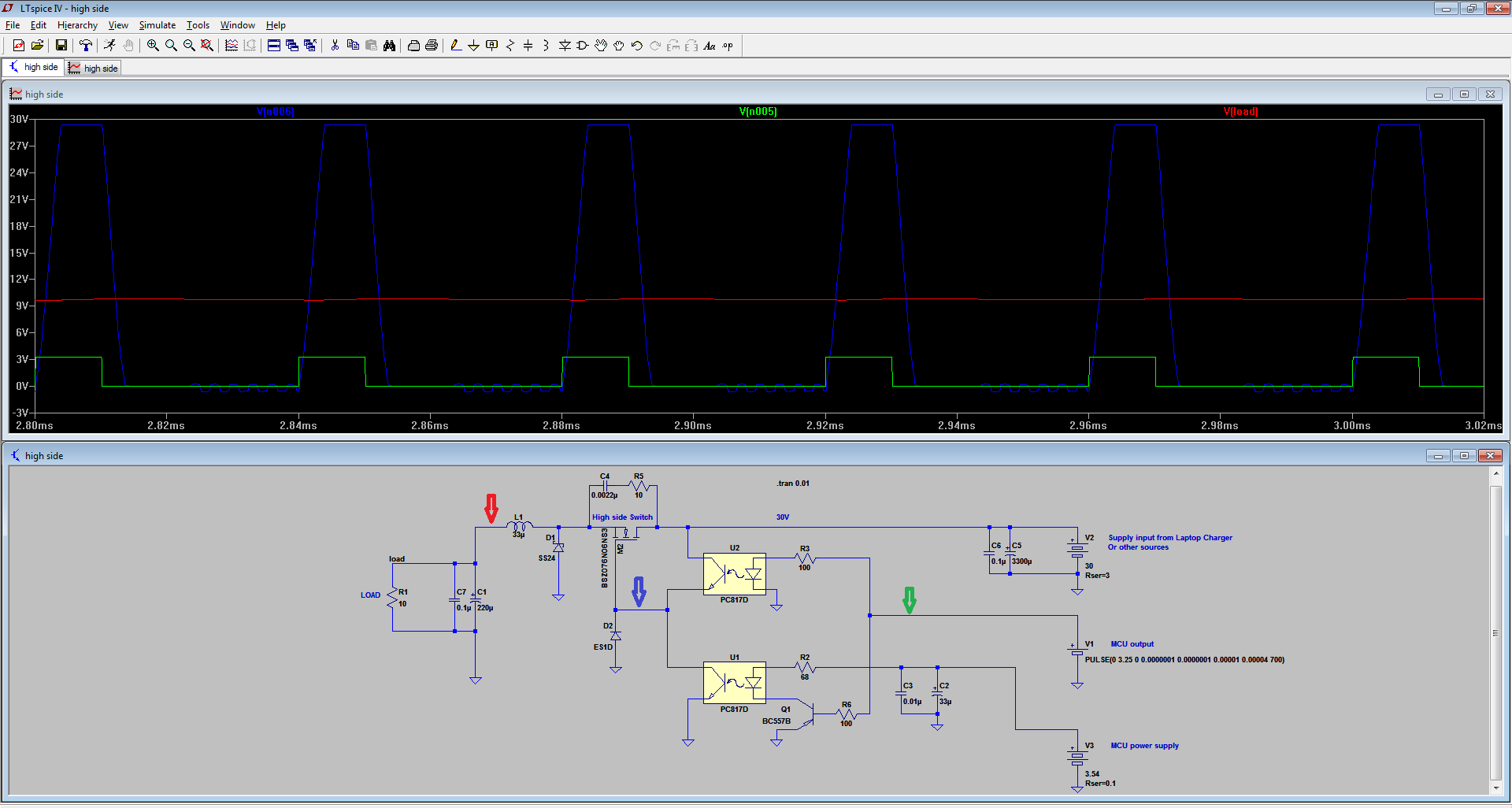I'm posting today an LTspice simulation of the buck converter. I went for the simulation because it is always a better way than to try to change physical values of the components and try to remake the tests and measurements.

I might go for this variant of the Buck module, so I must integrate it into the larger schematic. Don't mind the actual value of the mosfet. I just used whatever I could find in the list that matched the characteristics of the IRF3205 (the one I'm planing to use). The simulation showed that I obtain better results with a 33uH inductor. It also reveals that increasing the current through the optocoupler LEDs I can obtain stiffer slopes. The simulation measures a maximum slope of around 2.5us instead of up to 10us per rising slope in the A2 iteration of the schematic. Much better!
I think this optocoupler approach in trying to build a mosfet driver for a high side switch is not the fastest one, but it surely is a cheap and reliable one. The D model of the 817s is the fastest one and it seems like with this schematic, the on-off switching times are just enough to make the optocoupler transistors NOT open in the same time.
I would call this the A3 iteration of the schematic after I integrate this module into the large schematic.
I ran the simulation at a PWM frequency of 25KHz, just above the audio band. A drawback of this actual design is that I cannot go higher because of these slopes.
At this point of the design, I'm wondering about the efficiency of the entire schematic.
Stand by for updates.
 Marius Taciuc
Marius Taciuc
Discussions
Become a Hackaday.io Member
Create an account to leave a comment. Already have an account? Log In.